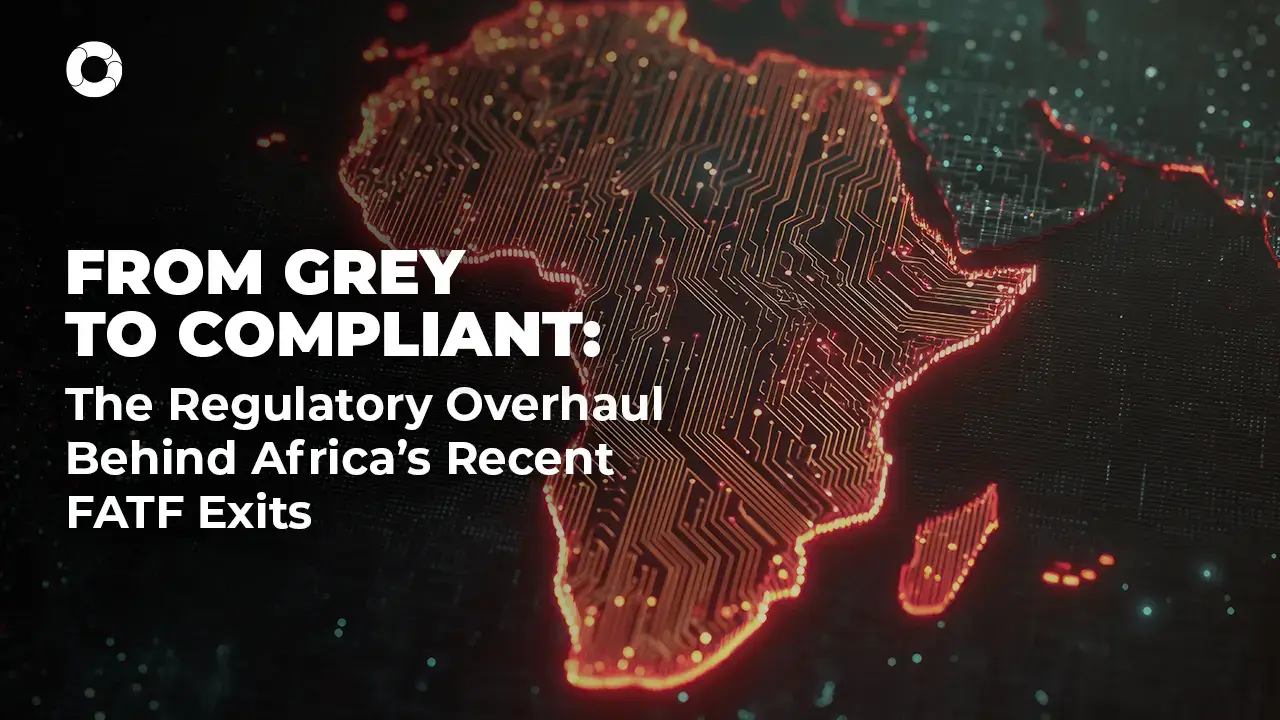Stablecoins and compliance: Preparing for the new wave of regulation
Stablecoin transactions are shaking the foundation of financial operations and risk management compliance across every industry. From hotel management to fintech startups, companies are introducing stablecoin acceptance and bartering. The total number of transactions using cryptocurrencies tied to the U.S. dollar has doubled over the past 18 months, or around $30 billion. While that is only roughly 1% of the total global money flow, it does signal a significant trend.
For operational risk and compliance leaders, that shift in financial tender both represents the promise of new and exciting revenue streams as well as a complex web of government and industry regulations.

|
Table of contents |
Stablecoins 101: A Risk-Oriented Primer
A stablecoin is a digital asset (much like cryptocurrencies or tokens) directly tied to (pegged) fiat currencies. In other words, a stablecoin might hold its value based on the U.S. dollar or the Euro. There are only four primary types of stablecoins right now, including fiat-collateralized, commodity-backed, crypto-collateralized, and algorithmic.
The whole idea is to make digital coins more “stable” by tying them to something more tangible and familiar to investors. Regulatory scrutiny of such coins is quickly coming under fire because of their rapid adoption. While Tether (USDT) is probably the most well-known currently, plenty of government leaders, including presidents and foreign ministers, are recommending either the launch or adoption of government-backed stablecoins. That is where new laws are making headway into their use and compliance.
The GENIUS Act: A Federal Baseline for Stablecoin Laws
Passed in July 2025, the U.S. GENIUS Act seeks to offer comprehensive oversight for stablecoins. The act is named as the Guiding and Establishing National Innovation for U.S. Stablecoins Act. The goal of this legislation is to narrow the scope to “payment stablecoins” only pegged to fiat currencies. That way, more bank-like compliance standards can be implemented instead of third-party or algorithmic verification typically used for other major cryptocurrencies like Bitcoin, Ethereum, and Litecoin.
The GENIUS Act goes a bit further, defining who can issue stablecoins. They must be insured by banks, credit unions, OCC-qualified nonbanks, or state-regulated entities (under $10 billion). Another key fact is that all issuers have to maintain a “one-to-one” backing with physical currency. That is a significant deal because it puts stablecoins on a form of the “gold standard,” but with U.S. currency rather than commodities.
What is making some privacy advocates and risk managers nervous is that the GENIUS Act places issuers under the purview of the Bank Secrecy Act. That increases AML obligations, sanctions compliance, and blockchain analytics into play. Federal regulators can quickly revoke licenses or impose penalties, including criminal actions for non-compliance.
The Wider Legislative and Market Context
Stablecoin regulation didn’t happen in a bubble overnight. The United States didn’t wake up one morning and suddenly notice crypto creeping up in the market. Plenty of international and state laws have been enacted to better regulate digital assets.
The EU has the MiCA provision known as “Markets in Crypto-Assets Regulation.” That created a framework for all crypto assets (referred to as Asset-Referenced Tokens and E-money Tokens). All issuers must obtain prior authorization and meet strict requirements for governance, disclosure, and reserve management.
In 2023, the UK issued the Financial Services and Markets Act, known as FSMA. That requires issuers to maintain sufficient reserves for redemption, segregate client assets, and prohibit the payment of interest on stablecoin holdings.
Even the state of California has its own regulatory act under the Digital Financial Assets Law (DFPI). While it is currently evolving in phases, it will be interesting to see how this law applies to new federal regulations and how this affects risk management officers trying to navigate stablecoin compliance.
Market and Operational Risk Implications
The good news is that crypto regulation, like the GENIUS Act, provides significant clarity and guidance for risk managers who are still new to the digital asset landscape. It merges crypto technologies with more traditional compliance boundaries through several mandated implications, all designed to reduce volatility in practice.
That being said, risk managers must plan for new stablecoin laws to crop up in the future. There will be liquidity mismatches during redemption spikes or consumer unrest. That can place a lot of concentrated risk on dominant issuers, leading to greater market fragmentation. Failures in segregation among proper custody will expose holders to counterparty risk.
The fact is that the legal uncertainty and lack of “common knowledge” among regulators regarding digital assets is still high. Risk managers will have to work slightly harder to maintain operations in this new environment by leveraging modern compliance tools backed by AI integrations like Pirani software that automates much of this risk management.
The Risk Manager’s Roadmap
To ensure each business is finding its footing regarding stablecoin regulation, it may help to develop a roadmap now to better adapt to current and emerging laws. A basic overview might include:
- Audit & Reserve Readiness
Start by confirming that issuers and partners maintain all the reserves needed to remain consistent with the current GENIUS Act. That would mean conducting stress tests on redemption scenarios (including a “run” on the bank), validating segregation of reserves, and monitoring for any regulatory arbitrage or state laws conflicting with federal oversight.
- AML & Sanctions Integration
The BSA obligations demand more oversight and active monitoring that should include blockchain analytics tools or AI-assisted anomaly detection. Flagging suspicious activity will go a long way toward avoiding fines or criminal investigations. That is why developing comprehensive sanctions compliance programs now helps mitigate future risk.
- Vendor & Counterparty Oversight
The GENIUS Act limits issuer categories. That means vendor concentration risk will increase. Businesses should develop a counterparty risk framework for any custodians they wish to partner with or use as payment processors. There should be robust contingency planning and exit plans in place.
- Policy & Governance
Finally, executive boards need to update risk appetite statements and compliance policies. Those wishing to continue or start stablecoin integration need clearly defined scenario analysis and procedures that trickle down to the rest of the company.
Practical Applications in Treasury, Fintech, and Banking
It is challenging to see how the GENIUS Act and similar crypto regulations will impact regular operations. For a company operating through a multinational treasury, accepting stablecoins might require more assurance that counterparties are complying with reporting and one-to-one backing.
For fintech issuers, state licensing or federal compliance might reach the oversight triggers of that $10 billion ceiling. There has to be a way to allow companies to rapidly grow without fear of getting “too big, too fast” for regulators to keep up.
In the banking sector, risk frameworks must adapt to include disclosure obligations. AML, KYC, and liquidity management must now include blockchain-based disclosures and settlement possibilities.
The GENIUS Act is likely the first shot over the bow of an evolving crypto ship. Technology is advancing at a rapid pace, testing the boundaries of definitions and legal implications. The integral framework is growing as more governments from Singapore to Australia realize how stablecoins and other cryptocurrencies are playing a bigger role in global commerce.
Compliance innovation will likely increase, maybe not at the same rate as digital asset evolution, but definitely in ways that are bound to make any risk manager’s pulse quicken a bit. That is why having AI-backed tools now is so crucial to maintaining compliance later.
Breaking into a New World of Stablecoin Regulation
Stablecoin laws continue to change and shift based on the needs of the market. The GENIUS Act isn’t slated to take effect until January 18, 2027, at the earliest, so there is some time for businesses to get into compliance before penalties or fees begin.
For risk managers, the mandate is clear. Steps must be taken to mitigate potential risk, operational downturns, and legal vulnerabilities. Building flexible governance systems is crucial, and that is where Pirani can help. From detection to compliance, Pirani’s risk management software helps reduce errors, save time, and make better decisions, including with stablecoin implementation.
Sign up today for free or schedule a demo and get the reassurance needed that your business is well prepared for new stablecoin compliance.
You May Also Like
These Related Stories

5 tips for avoiding financial fraud

How much does it cost to ignore Risk Management?

Risk-Management Milestones in the US 2025

Africa’s FATF Exits: Inside the New Regulatory Transformation

Mastering SOX Compliance: 8 Key Steps for a Successful Audit



No Comments Yet
Let us know what you think